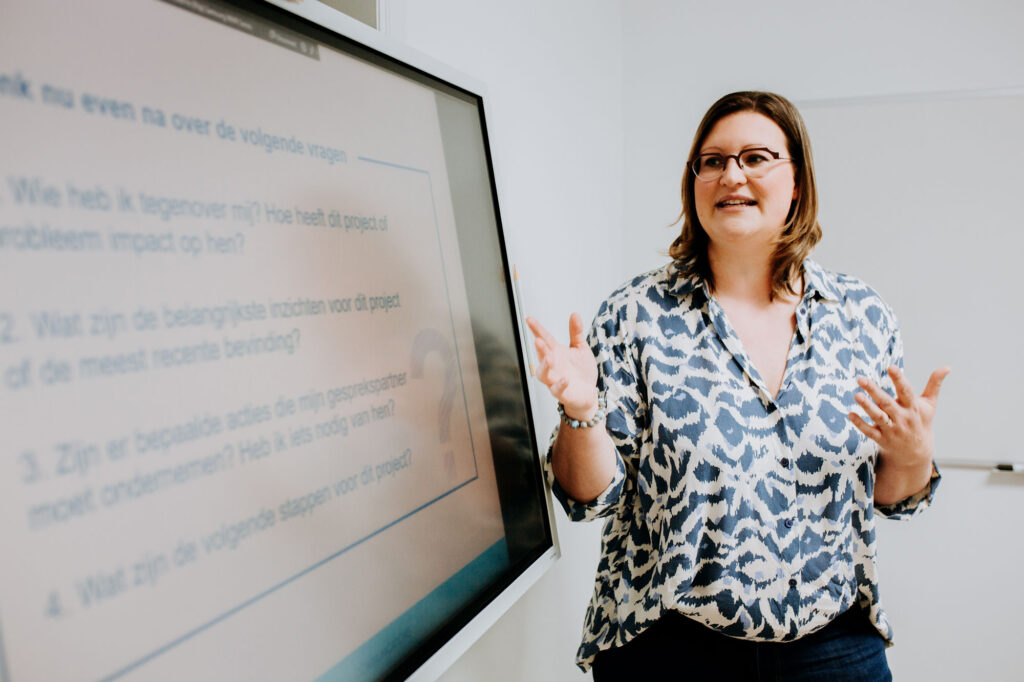SOS Presentation
You’ll never skip your executive summary again
Estimated time to read: 5 minutes

Raise your hand if you’ve experienced anything like this in the last few weeks…
You led a meeting to discuss multiple projects. By the third status update you heard, you had difficulty distinguishing important messages from detail. By the fifth, you had trouble focusing.
You talked to the CEO about your priorities. Before you could get to the point, you landed knee-deep in a discussion about minor details. Which meant you never got your intended message across before their next meeting started.
You skipped over the executive summary in your last presentation. Or didn’t have one to begin with.
If you felt a painful pang of recognition reading any of these, executive summaries may become your new best friend.
Why the executive summary is the ONLY slide you need
An executive summary is like an ‘elevator pitch’ for your audience. That one slide at the start of a business presentation or report contains all the important messages the presentation will expand on.
When done well, the executive summary lands your key message with your audience from the very start of your presentation. It means they’ll understand why this meeting is important to them and the organization.
The result? You’ll get their full attention. And therefore, the opportunity to have more impact.
Many presentations I’ve seen as a McKinsey consultant and communication coach focus on process first. For example:
- An overview of the five points the presenter will cover (but without the key messages).
- The way they got to the result (but without telling you what that result is).
- The detailed analyses that led to their recommendation.
But if your presentation is the fourth point on the meeting’s agenda, chances are the attention of your audience is already wavering. Or you might simply not get enough time to reach the recommendation at the end.
Worse, your audience may start questioning your process. Which means you’ll waste valuable time explaining the minute details of your market research methodology. And that’s the one thing you DON’T need their input on.
What if you started by telling them you’ve got three options for business expansion? And then tell your audience what you expect from them during this meeting?
They’ll be all in.
Granted, they will have lots of questions. But that’s what your presentation is for—to answer those important questions about your key message.


How to write an executive summary?
Upside down.
So how do you get started on an executive summary that you DON’T want to skip?
Starting upside down. Or more commonly known in the business world as top-down communication. Instead of process > analyses > result, you flip the sequence.
Start by identifying your key message. What is the one question you want to discuss with your team during this meeting? What is the one idea or recommendation you want the other executives around the table to walk away with?
Make sure you keep your key message as specific as possible and relevant to your audience. They are more likely to engage when it relates to their current priorities.
Once you communicate that key message, talk about the different elements that support it. What does your audience need to understand and/or believe to accept your key message?
Do they need the cost-benefit analysis of the different options for expansion? Or the results of the market research you conducted? Do they need to see the process that got you to the three options you want to discuss?
Analyses and processes DO have a place in a presentation. But only when they are needed to support the key message. When used strategically and with intent, these elements enhance the credibility of your recommendation rather than distract from it.
(By the way, you just got a brief recap of the pyramid principle. Just in case you’ve ever wondered how to use that concept in your day-to-day communication.)
The temptation to show every analysis during the presentation will be there. It can feel anti-climactic to start with the recommendation instead of all the hard work that came before.
Resist the urge. Your audience trusts that you are the expert. They know your recommendation is built on solid work. And if you really, really need those analyses close, put them in the appendix so you can easily bring up the right data when you get a question.
If you want to see a great example of an executive summary in action, read any McKinsey Global Institute report. For example, this report about “Performance Through People” starts with “At a glance”. The section lists the four main conclusions of the report in bold. The rest of each paragraph consists of the supporting elements for that statement.
You get the core of a 40-page report in 4 short paragraphs. Which is exactly what an executive summary should do.
Three things you can do with an executive summary TODAY
I believe insights are only as good as their practical applications. So how can you use executive summaries in your communication as of today?
1) Add an executive summary to any presentation longer than 5 slides and USE it
Once you’ve determined your presentation objectives, the first thing you draft is the structure. You start with the key message—which tends to be closely related to the objective—and identify the supporting elements your audience needs to get on board.
And what does that structure turn into? You guessed it—the executive summary. Only then do you draft or gather slides. That means the executive summary doesn’t just sharpen your audience’s focus during the presentation, it also helps you prioritize your preparation.
2) Give feedback on your team’s presentations with the executive summary and key message in mind
As an executive, you often give input on your team’s presentations. A great way to help them distill the essence and have more impact is to ask the questions we discussed earlier.
✓ What is the one question you want answered in this meeting?
✓ What is the one idea or recommendation you want the audience to walk away with?
✓ What supporting elements does your audience need to get on board?
3) Identify the key message for your next important conversation—even if you don’t use slides
Starting with your key message becomes second nature. And when it does, your communication will drive more results faster. Identify your key message and make it as specific and relevant to your audience as you can.
For example:
NOT to inform the CFO about the status of our project;
INSTEAD to inform the CFO about the delay our building manager expects on location X and my team’s plan to mitigate the risks.
So go ahead. Add an executive summary to your next presentation. Test its impact. And if the first one doesn’t feel quite right, do it again. And again…
Until you find what works for you.
Need more inspiration or examples? My newsletter subscribers will soon get a fillable and reusable template for the executive summary as part of “the Ultimate Executive Presentation Template”. You can already sign up here and be the first to receive the template in your inbox.
If you need personal, hands-on support to prepare for an important presentation, I can help too.

Ellen Bracquiné
Ellen Bracquiné is the executive communication coach and trainer for leaders who want to communicate as well as they perform. She cultivates her experience as management consultant, talent manager, and coach to support executives on their path to effective communication. From guidance for important presentations to custom coaching and training programs, her clients get instant, tangible results.
There are no best practices in communication
Just like your leadership style, the way you communicate is unique. So a one-size-fits-all approach makes little sense. But if you can’t adopt best practices, what CAN you do to grow?
Secrets From a Consultant’s Life: The Friday Evening E-Mail
Three years after I left McKinsey to start my business, what sticks are the ways of working. Want to know a few secrets from a consultant’s life? Let’s start with the Friday Evening E-Mail.


